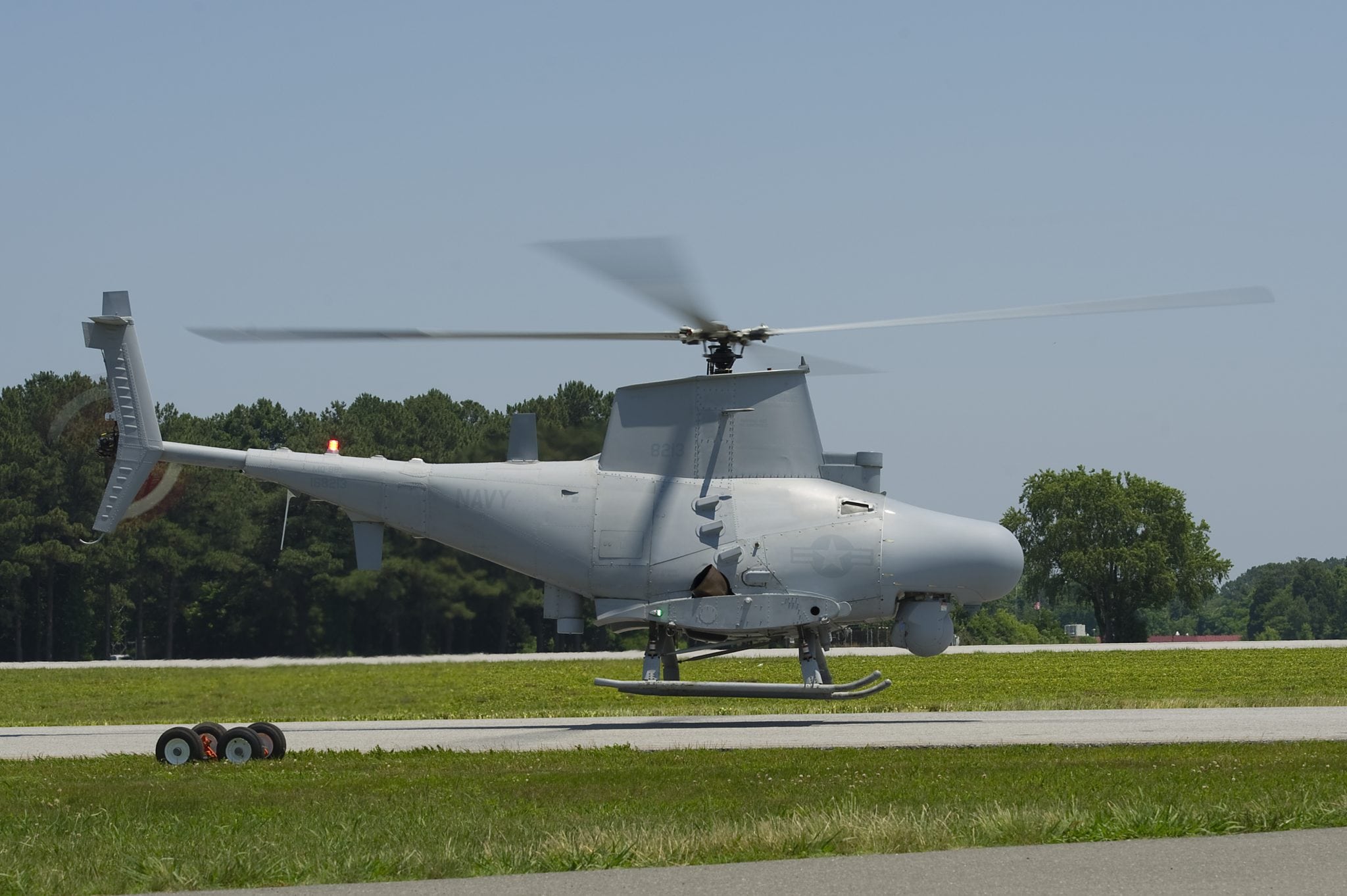[Avionics Today June 17, 2014] The U.S. Naval Air Systems Command (NAVAIR) completed its first flight of the MQ-8B Fire Scout unmanned helicopter with a new radar designed to increase long-range imaging and search capabilities for commanders. The new system is a Telephonics Corporation AN/ZPY-4 multi-mode maritime surveillance radar system typically used for manned aircraft that was modified by Northrop Grumman and integrated onto the Fire Scout.

MQ-8B Fire Scout. Photo, courtesy of NAVAIR.
Northrop Grumman first announced its selection of the Telephonics radar system in January 2013, as an added capability to the MQ-8B’s Flir Systems Brite Star II electro-optical/infrared payload. Pairing the radar with the current electro-optical infrared payload is giving Fire Scout operators a “drastically” enhanced ability to scan areas for threats in real-world scenarios, according to Northrop Grumman. NAVAIR expects deployment of the Fire Scout with the modified radar system to occur in 2015.
The U.S. Navy is planning to field a total of eight MQ-8B systems, which would feature a total of 23 unmanned helicopter airframes with the specific goal of increasing its maritime surveillance capability. Progress on the integration of this radar on the MQ-8B along with NAVAIR’s next round of X-47B Unmanned Aircraft System (UAS) sea trials is leading to significant advancements in unmanned aircraft technology.
“This modernized radar complements Fire Scout’s other sensors and systems to provide the Navy with increased visibility far beyond the horizon, while collecting vital imaging for maritime operations,” said George Vardoulakis, vice president, medium range tactical systems, Northrop Grumman Aerospace Systems.